Related Research Articles

Pharmacology is a branch of medicine, biology, and pharmaceutical sciences concerned with drug or medication action, where a drug may be defined as any artificial, natural, or endogenous molecule which exerts a biochemical or physiological effect on the cell, tissue, organ, or organism. More specifically, it is the study of the interactions that occur between a living organism and chemicals that affect normal or abnormal biochemical function. If substances have medicinal properties, they are considered pharmaceuticals.

Ferid Murad is an American physician and pharmacologist, and a co-winner of the 1998 Nobel Prize in Physiology or Medicine.

John Jacob Abel was an American biochemist and pharmacologist. He established the pharmacology department at Johns Hopkins University School of Medicine in 1893, and then became America's first full-time professor of pharmacology. During his time at Hopkins, he made several important medical advancements, especially in the field of hormone extraction. In addition to his laboratory work, he founded several significant scientific journals such as the Journal of Biological Chemistry and the Journal of Pharmacology and Experimental Therapeutics.
Albert Lester Lehninger was an American biochemist in the field of bioenergetics. He made fundamental contributions to the current understanding of metabolism at a molecular level. In 1948, he discovered, with Eugene P. Kennedy, that mitochondria are the site of oxidative phosphorylation in eukaryotes, which ushered in the modern study of energy transduction. He is the author of a number of classic texts, including: Biochemistry, The Mitochondrion, Bioenergetics and, most notably, his series Principles of Biochemistry. The latter is a widely used text for introductory biochemistry courses at the college and university levels.
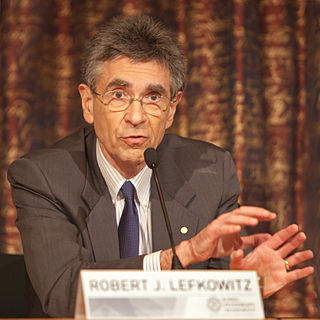
Robert Joseph Lefkowitz is an American physician and biochemist. He is best known for his groundbreaking discoveries that reveal the inner workings of an important family G protein-coupled receptors, for which he was awarded the 2012 Nobel Prize for Chemistry with Brian Kobilka. He is currently an Investigator with the Howard Hughes Medical Institute as well as a James B. Duke Professor of Medicine and Professor of Biochemistry and Chemistry at Duke University.
The HIST Award for Outstanding Achievement in the History of Chemistry (2013-present) is given by the Division of the History of Chemistry of the American Chemical Society (ACS). The award was originally known as the Dexter Award (1956-2001) and then briefly as the Sidney M. Edelstein Award (2002-2009), both given by the ACS.
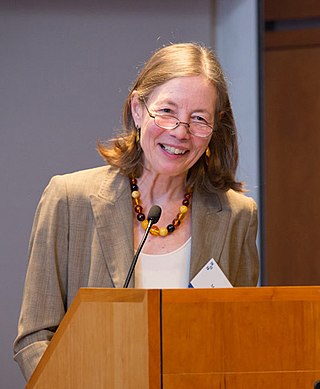
Mary Jo Nye is an American historian of science and Horning Professor in the Humanities emerita of the History Department at Oregon State University. She is known for her work on the relationships between scientific discovery and social and political phenomena.

William Platt Jencks was an American biochemist. He was noted particularly for his work on enzymes, using concepts drawn from organic chemistry to understand their mechanisms.
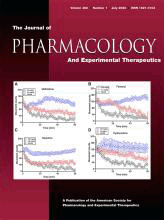
The Journal of Pharmacology and Experimental Therapeutics is a peer-reviewed scientific journal covering pharmacology. It has been published since 1909 by the American Society for Pharmacology and Experimental Therapeutics (ASPET). The journal publishes mainly original research articles, and accepts papers covering all aspects of the interactions of chemicals with biological systems.
The American Society for Pharmacology and Experimental Therapeutics (ASPET) is a scientific society founded in late 1908 by John Jacob Abel of Johns Hopkins University, with the aim of promoting the growth of pharmacological research. Many society members are researchers in basic and clinical pharmacology who help develop disease-fighting medications and therapeutics. ASPET is one of the constituent societies of the Federation of American Societies for Experimental Biology (FASEB). The society's headquarters are in Rockville, MD. The current president is Michael F. Jarvis.
Ralph Franz Hirschmann was a German American chemist who led a team that was responsible for the first organic synthesis of an enzyme, a ribonuclease.
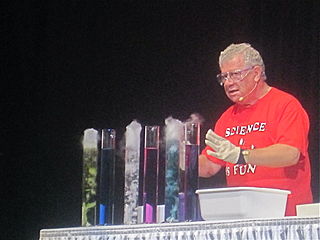
Bassam Z. Shakhashiri is a professor of chemistry at the University of Wisconsin-Madison, where he is the holder of the William T. Evjue Distinguished Chair. An active advocate for science education, he is the author of multiple books of chemical demonstrations. He was the 2012 president of the American Chemical Society and has received numerous awards and honors.
Henry A. Lardy NAS AAA&S APS was a biochemist and professor emeritus in the Biochemistry Department at the University of Wisconsin-Madison. He was elected to the National Academy of Sciences in 1958, the American Academy of Arts and Sciences in 1965, and the American Philosophical Society in 1976. Research in Lardy's laboratory centered on elucidating the mechanisms underlying metabolism.

Sir John Shipley Rowlinson was a British chemist. He attended Oxford University, where he completed his undergraduate studies in 1948 and doctoral in 1950. He then became research associate at University of Wisconsin (1950–1951), lecturer at University of Manchester (1951–1961), Professor at Imperial College London (1961–1973) and back at Oxford from 1974 to his retirement in 1993.
John Douglass Ferry was a Canadian-born American chemist and biochemist noted for development of surgical products from blood plasma and for studies of the chemistry of large molecules. Along with Williams and Landel, Ferry co-authored the work on time-temperature superposition in which the now famous WLF equation first appeared. The National Academy of Sciences called Ferry "a towering figure in polymer science". The University of Wisconsin said that he was "undoubtedly the most widely recognized research pioneer in the study of motional dynamics in macromolecular systems by viscoelastic techniques".
This is a timeline of women in science in the United States.

Harkishan Singh was Professor Emeritus at the Panjab University. He was a well recognized pharmaceutical academic, medicinal chemistry researcher and science historian. He had more than half a century experience in his respective fields to his credit. He worked at the Banaras Hindu University, University of Saugar, and the Panjab University in India, and abroad at the University of Maryland, University of Mississippi and the University of London.
Frederic Lawrence Holmes was an American historian of science, specifically for chemistry, medicine and biology.
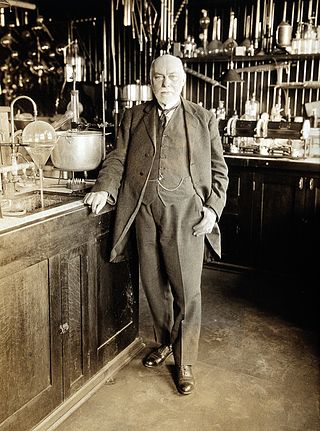
Frederick Belding Power was an American chemist who worked in pharmacology, plant chemicals, and on standards in pharmaceutical production. He served as a professor of pharmacy at the Philadelphia College and as director of pharmacy at the University of Wisconsin–Madison. He also served as a chemist for the Wellcome Chemical Research Laboratories in London where he examined Chaulmoogra oil and its use in the treatment of leprosy.
References
- ↑ "John Parascandola (1941–" (PDF). American Chemical Society. 2006-08-05. Retrieved 2009-08-11.
- 1 2 "EDELSTEIN AWARD FOR OUTSTANDING ACHIEVEMENT IN THE HISTORY OF CHEMISTRY". American Chemical Society Division of the History of Chemistry. Retrieved 22 July 2019.
- 1 2 3 "Awards, Fellowships, and Prizes". Journal of the History of Medicine and Allied Sciences. Oxford University Press. 49 (3): 433. 1994. doi:10.1093/jhmas/49.3.432. ISSN 0022-5045.
- 1 2 3 Perfetti, T.A. (2004-12-12). "John Parascandola" (PDF). American Chemical Society . Retrieved 2009-07-27.
- ↑ Parascandola, John (n.d.). "About Me". Personal web page. John Parascandola. Retrieved 10 August 2009.
- ↑ "News letter. February 2009" (PDF). American Association for the History of Medicine. February 2009. p. 11. Retrieved 2009-08-03.